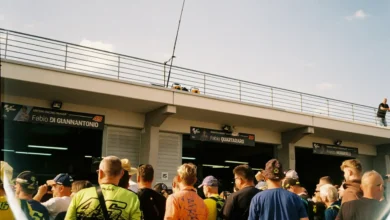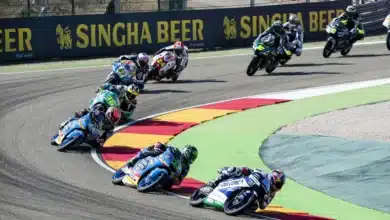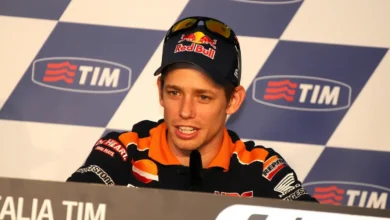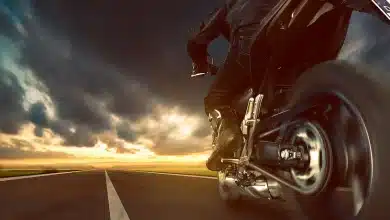Stoner: MotoGP corner runoffs “worst thing to happen to bike racing.”

MotoGP track limits and beyond
Nowadays, Race Direction is busier than ever, with many more track-limits violations. Officials helped all MotoGP circuits with electronic spies, high-definition cameras that are positioned where required, allowing Race Direction to depend on more than just the TV video we see.
MotoGP didn’t require all this fuss when racing circuits were flanked by gravel and grass, and racecourses are no longer bordered by gravel or grass. Formula 1 replaced gravel traps with asphalt runoff at numerous corners more than a decade ago because it was safer. When a Formula One vehicle exited the track at 150 miles per hour and bounced into the gravel, it would barely slow down before hitting the barrier. The automobiles can use the brakes to slow down because of the asphalt runoff.
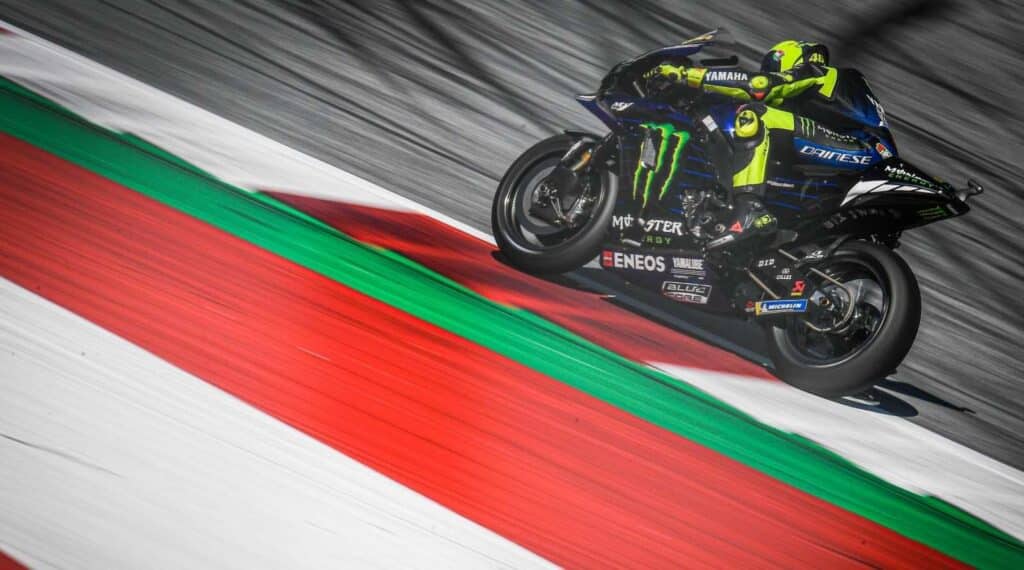
Asphalt Runoff
Most circuits have replaced grass, gravel, and artificial turf track borders with asphalt spill to increase racing safety in the last decade or two.
Many bike racers were horrified by asphalt runoff since a strip of asphalt is much more substantial than a bed of gravel! In most cases, asphalt is safer than gravel because gravel traps induce riders to cartwheel, which causes bones to break.
Casey Stoner, a two-time MotoGP world champion, argues that “introducing big asphalt runoffs at courses is the worst thing that happened to motorcycle racing.”
Whether you like it or not, asphalt runoff has become the standard, expanding the racecourse beyond the kerbs. Riders eventually began to use the asphalt to extend their lines when they made a mistake, attack another rider, or find a quicker path.
As a result, the no-go green zone was established, as well as penalties for motorcyclists who often use the green and the asphalt runoff, whether by meters or millimeters.
MotoGP installed sensors in the green-painted runoff region in 2021 to track truck limitations beyond the circuit’s curb. Riders may now only breach track limitations four times before receiving a penalty in races.
Stoner was asked how to make youth motorcycle racing safer, particularly following three deadly incidents in 2021 and more unsafe riding in Moto3. Stoner believes that the application of regulations has been a problem. Asphalt spills lined up in the corners lower riding standards since motorcyclists are “no longer terrified” in battle.
Some individuals who mourn the loss of grass and gravel on racetrack verges have proposed that asphalt runoff be covered with low-grip paint so that riders who run wide are automatically penalized, as they were in the past.
“Technically, it could be possible to reduce grip in the runoff, but first, we’d have to talk about and agree on what is and isn’t a safe level of low grip. Says Termas de Rio Hondo designer Jarno Zaffelli.
Stoner believes that greater support should come from the race direction because there have been no concerns for so many years. There has to be more clarity or firm choices on riding or other issues. He said there is so much wiggle room that there is no longer a track edge. It simply continues flowing, and the only thing that limits it is some green paint. According to Stoner, it does not improve the problem since people are fearless about it.
“I don’t think that helps the problem because there’s no edge of the track now, while previously, when there was green grass, everyone had to check themselves.”
“Now it is like,’ Hey, I’ll bust him. There are plenty of tracks out there, so it’s okay to get away from them.”
“So I think we need to learn to have a little more respect for each other.
“I don’t think it’s just young guys that are causing it. I’ve seen many more mature and experienced racers still doing similar things.
Jarno Zaffelli said, “Let’s assume we discover a paint that decreases grip to a satisfactory degree; then you’ll need uniformity in runoff grip from one track to the next, all across the world, which is just not doable.” The issue isn’t with the paint; it’s with maintaining it and verifying and managing that maintenance.
“Perhaps some type of special material might do the job, but it would be deteriorated by the sun and rain, which would be another issue.” What about a slick-compatible paint or material? Will it work in the rain or on track days with street tyres? And that’s just for bikes; what about automobiles? So it’s not going to be simple!”
Stoner believes that it’s all because the penalties and punishments may not be definitive, clear, and strict enough. If there’s more of that, everyone will be a bit more reserved.
“But for me, the worst thing that happened to motorcycle racing is all that extra runoff.
“Currently, there is just no edge to the track. There is no limit, and I think that’s very hard to keep everybody inside”, said Stoney.

